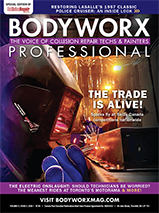In an era where sustainability is not just a choice but a necessity, the auto recycling industry is undergoing a revolutionary transformation. Green innovations are leading the way in reshaping how vehicles are recycled, prioritizing environmental responsibility while still bolstering the economy. Let’s delve into how these cutting-edge practices are setting new standards for a sustainable future in auto recycling.
The journey begins with the realization that automobiles are treasure troves of recyclable materials. From metals like steel and aluminum to plastics, glass, and even fluids, nearly every component of a decommissioned vehicle can embark on a new life if processed correctly. Innovations in dismantling technology are making it possible to achieve this with unprecedented precision and efficiency.
Advanced dismantling techniques are at the forefront of this transformation. Traditionally, the process of breaking down a car for parts and materials was labor-intensive and not always environmentally friendly. Today, robotic dismantling systems are changing the game. These systems can carefully and quickly disassemble vehicles, recovering parts for reuse and materials for recycling without unnecessary waste or environmental harm.
Beyond the dismantling process, green innovations are also making waves in how recycled materials are utilized. Recycled metals from cars are finding new life in various industries, from construction to consumer goods. This not only reduces the demand for virgin materials but also significantly lessens the environmental impact associated with mining and processing.
Plastic recycling from vehicles is another area where innovation is key. With auto manufacturers increasing the use of plastics to lighten vehicles and improve fuel efficiency, the need for effective recycling strategies has never been greater. Through advancements in sorting and processing technologies, plastics from old cars are being repurposed into high-quality materials for making new vehicle parts and other products.
Fluid recovery and recycling is another critical aspect of green auto recycling. Innovations in fluid extraction and processing ensure that oils, coolants, and other liquids are not just removed safely but also treated and reused, minimizing pollution and conserving resources.
The integration of green technologies in auto recycling extends into how recycled parts are catalogued and sold. Modern inventory management systems powered by artificial intelligence (AI) and blockchain technology provide a transparent and efficient marketplace for recycled auto parts. This not only facilitates the reuse of components but also helps in reducing the carbon footprint associated with manufacturing new parts.
However, the journey towards a sustainable future in auto recycling doesn’t stop at technological innovation. It also requires a collaborative effort involving policymakers, industry stakeholders, and consumers. Regulations and incentives that encourage the recycling of vehicles and the use of recycled materials are essential. Equally important is raising public awareness about the benefits of choosing recycled parts and supporting green auto recycling practices.
In conclusion, the intersection of innovation and responsibility is driving the auto recycling industry towards a greener and more sustainable future. By embracing advanced technologies and fostering a culture of environmental stewardship, we can ensure that the end of the road for a vehicle marks the beginning of a new, environmentally friendly life for its materials. The transformation of auto recycling is not just about safeguarding our planet today—it’s about securing a healthier, more sustainable world for future generations.






















